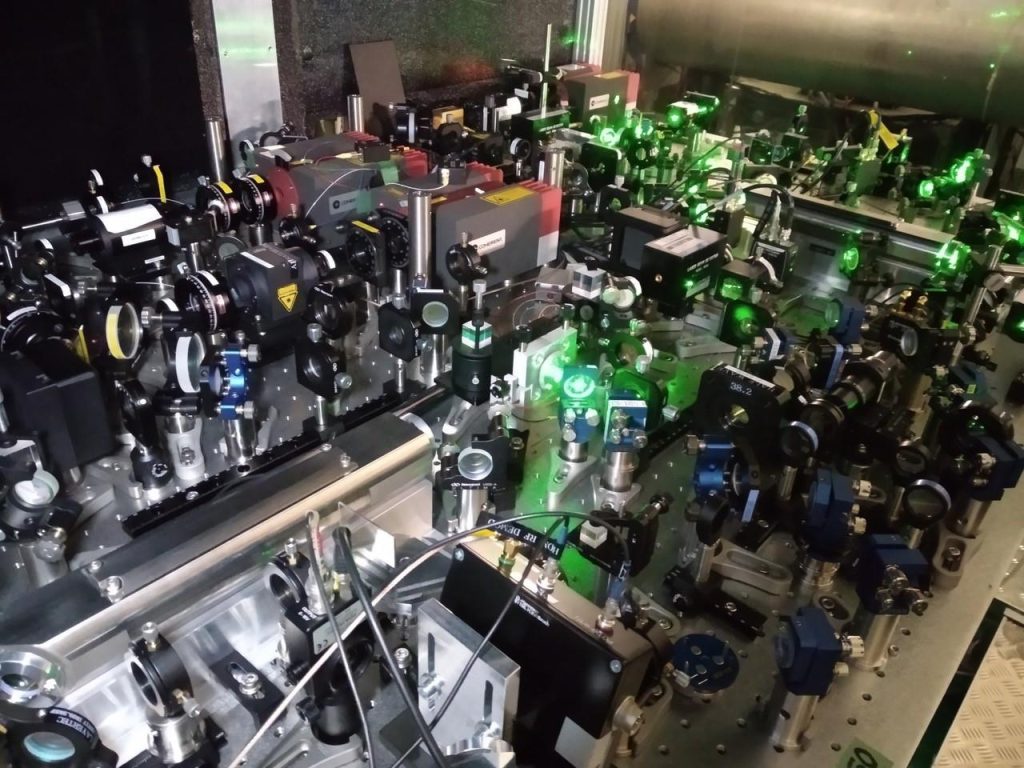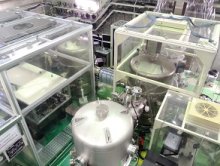See ten times more gravitational waves thanks to the quantum vacuum
An international collaboration involving Japanese and European physicists, including researchers from LAPP and the Astroparticles and Cosmology Laboratory in Paris (APC), has developed a new method for reducing quantum noise in gravitational wave detectors. This technique which is published in Physical Review Letters on Tuesday 28 April 2020 will make it possible to search for ever weaker and more distant sources of gravitational waves.
Gravitational waves are tiny space-time vibrations produced by high-energy phenomena in the universe, such as the fusion of black holes or neutron stars. Since they have been observed for the first time in 2015 by the LIGO-Virgo collaboration the sensitivity of gravitational wave detectors has been greatly improved, so that today it’s possible to detect these events once a week.
Gravitational wave observatories use very stable lasers to accurately measure the distance between mirrors several kilometres away. The variation in the quantity of light or photon number measured at the detector output thus reveals the passage of a gravitational wave. But the quantum nature of photons limits the sensitivity of detectors : the quantum fluctuations associated with their measurement eventually hide the gravitational wave signals. To attenuate this effect, physicists use special states of light called “compressed states of the quantum vacuum”. Their use in the frequency range above 100 Hz improves the sensitivity of detectors ; however, the effect is reversed for lower frequencies, where the observation of many astrophysical sources is expected.
“Physicists identified quantum noise as the limit of detector sensitivity forty years ago” says Raffaele Flaminio of the Virgo team of LAPP. Since then, they have been trying to get around it. As part of a collaboration between European and Japanese researchers, I took on that task in 2015 when I was working on the prototype gravitational wave detector available at the National Astronomical Observatory of Japan, called the TAMA300″. And it was a success ! R. Flaminio, who was in charge of the research project, and his colleagues succeeded in producing and testing a new type of compressed vacuum state capable of reducing the effect of quantum noise, this time at all frequencies. The results of their study were published in the Physical Review Letters on Tuesday 28 April 2020. Similar results were obtained by a group at the Massachusetts Institute of Technology (MIT) in the United States, using an optical cavity of sixteen meters instead of the three hundred meters used in TAMA300. The two papers were jointly published on April 28, 2020.
Known as “frequency-dependent compressed vacuum”, these quantum states will be used in all gravitational wave detectors around the world : Virgo in Europe, LIGO in the United States and KAGRA in Japan. The Virgo team of LAPP is already working on implementing this technique for the European detector for its next enhancement known as Advanced Virgo Plus. “The results of this study obtained with the limited resources of the Japanese prototype make us confident that the expected increase in sensitivity for Virgo will be achieved”, commented Flaminio. Through this study we have acquired further initial know-how on this novel technique, which will spare us a precious amount of time for its implementation in the detector”. Combined with other improvements, the reduction in quantum noise should make it possible to increase the number of events seen by Virgo by more than a factor of ten.
The story may not end there. Other quantum noise reduction techniques are being considered at TAMA300.
Référence de la publication : Zhao, Y., et al. “Frequency-dependent squeezed vacuum source for broadband quantum noise reduction in advanced gravitational-wave detectors”, Physical Review Letters, April 28, 2020.



